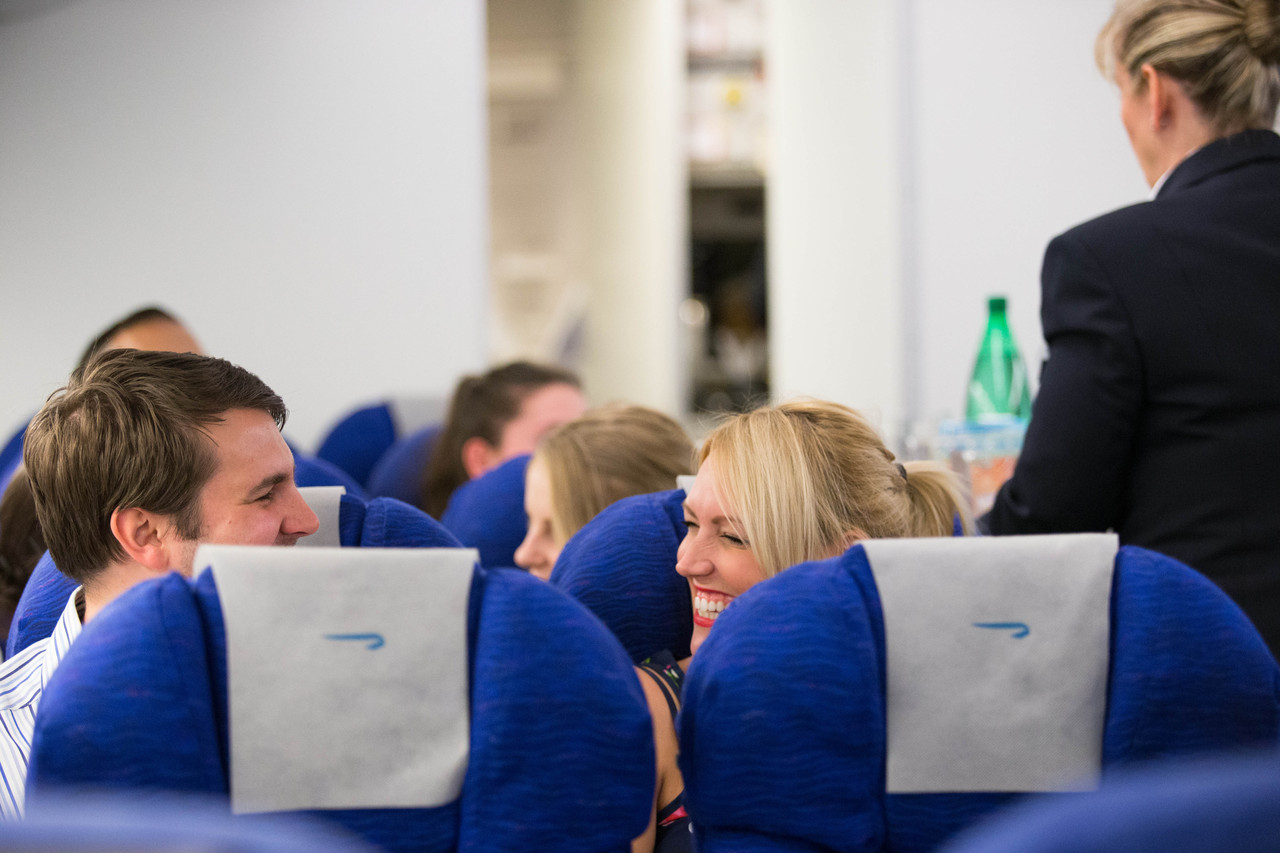
Last year didn’t turn out to be a particularly good one for United Airlines. Along with the now infamous Dr David Dao ‘dragging incident’, you may also remember that the airline came in for criticism over its “sexist” dress code for non-rev passengers. In July 2017, United refused to let two female passengers board a flight from Denver to Minneapolis because they were wearing leggings – a policy that some said impacted women far more than men.
At the time, United was quick to point out that the airline didn’t have anything against normal fare-paying passengers wearing leggings – telling regular customers, “your leggings are welcome”. The two victims in this case, however, were “pass riders” of a United employee – they were getting a heavily discounted flight and were expected to comply with a strict company dress code.
It turns out that the gate agent, in this case, wasn’t doing anything wrong when she refused travel for these two “pass riders”. But it did call into question what is and isn’t appropriate apparel choices for non-rev passengers. Should leggings be allowed? Or maybe shorts and vests? Or should airline employees and their privileged friends be wearing formal trousers and dress shoes when they travel on an ID90?
It seems like the clothing choices that passengers, even in the pointy end of the plane, choose to wear has changed dramatically in the last few years. Some might lament the wearing of so-called athlesiure wear instead of a jacket, button down shirt and neatly pressed trousers but whatever your opinions, airline policies don’t really seem to have kept pace with cultural changes.
Delta Air Lines was one of the first to introduce a more relaxed policy for non-rev passengers – essentially allowing any kind of clothing as long as the overall appearance was “well-groomed, neat, clean, safe and respectful from head to toe.” The airline also says clothing should be “respectful” to other passengers and bans bare feet.
Since then a number of carriers have introduced more relaxed dress code policies. Take American’s as an example:
- Employees are asked to always wear clothing that is clean and neat.
- Jeans and athletic shoes are acceptable in any cabin.
- Employees may not wear clothing that is torn, dirty, or frayed, clothing that is distracting or offensive to others, anything revealing (e.g., extreme mini-skirts, halter, and bra-tops, sheer or see-through clothing), or visible swimwear, sleepwear, or underwear.
- Clothing that is vulgar or violates community standards or decency is also never appropriate, including items that have words, terms, or pictures that may be offensive to others
- Bare feet are also not permitted.
Shorts, beach footwear such as flip-flops and sportswear, including baseball caps are also not allowed in American’s Business and First Class cabins.
And it seems like the more relaxed policies for North American airlines are starting to be adopted by their competitors across the Atlantic. We’ve now learned that British Airways, a bastion of good manners and formal dress, is going to relax its non-rev dress code as well.
According to the airline, in an internal memo, “today’s customers often have a more relaxed approach to their own dress, and it’s fair that BA colleagues should feel relaxed too.”
A new dress code for British Airways non-rev passengers
Here’s what is now deemed acceptable – in every cabin, including First and Business Class:
- Jeans,
- T-shirts and
- Casual shoes
What isn’t acceptable: Jeans that are frayed or have holes, “overly revealing” clothing, sportswear, beach clothing (including flip flops), and any kind of shorts or sportswear.
It doesn’t quite go as far as the policies adopted by American carriers – for example, even United’s controversial non-rev dress code allows the wearing of shorts but it is remarkbly simple. We’re led to believe that the former policy required to wearing of formal shoes no matter what cabin a staff member of their pass rider was flying in.
British Airways is also reminding its staff to use their best judgment and think of “fare paying customers and show sensitivity towards them.”
It looks like this policy will also apply to non-rev passengers who work for a different airline but end up flying with British Airways. But be careful – just because some airlines are relaxing their dress code, it doesn’t mean you’ll find such attitude at other carriers.
Mateusz Maszczynski honed his skills as an international flight attendant at the most prominent airline in the Middle East and has been flying ever since... most recently for a well known European airline. Matt is passionate about the aviation industry and has become an expert in passenger experience and human-centric stories. Always keeping an ear close to the ground, Matt's industry insights, analysis and news coverage is frequently relied upon by some of the biggest names in journalism.







